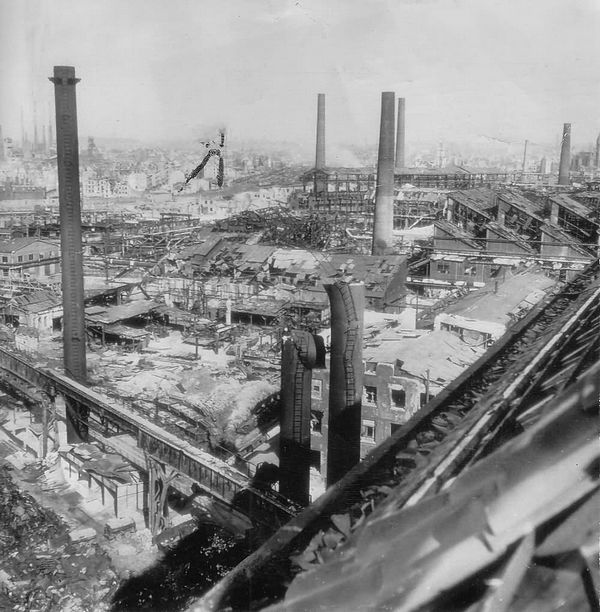The Kruppwerke
It is hard to over exaggerate the vital importance of the Krupps steelworks to the German war economy.
The Essen skyline was dominated by the Kruppwerke
This fact was recognised by the authorities who built a dummy steelworks some 10km south of the real target.
The Scheinanlagen was built near Velbert and covered an area 2.5 x 1.5km.
The official name was the 'Krupp night glow system' and the phantom factory was made of wood and canvas and intended to mislead the Allied bombers during their nightly attacks.
Although the site was intended to decoy night attacks, the installation had diesel locomotives that drove around going nowhere, a gasometer in which no gas was stored and industrial buildings in which nothing was ever manufactured.
Fake chimneys, railways lines and a gasometer were all part of the deception
Lights of different strengths and colors were used to simulate everything that exists in a steel factory at night: factory streets, factory halls, steel tapping, steel rollers, welding work.
At night, the lighting created a realistic effect
This huge decoy was mainly controlled by older members of the Luftwaffe who sat in a bunker that is still near Velbert today.
The control bunker on the Velberter Rottberg
A series of pictures gives more details of the bunker that controlled this site...........the link open in a new window
The Krupps decoy site was not recognised until late 1943 by which time 64% of all high explosive and 75% of all incendiaries had been dropped on the fake factory.
An extract of the magazine with a 'wishful' headline.........click the map or this link for a larger version (opens in a new window)
Following the identification of the decoy in late 1943 and the improved methods of target location and marking, the Kruppwerke began to sustain increasing amounts of damage from air raids.
However, the factory was not finally "knocked out" until January 1945.
The results of the air raid on the 22nd January 1945